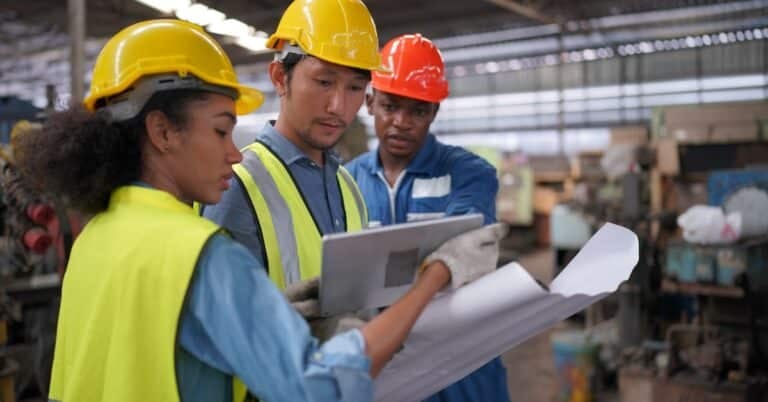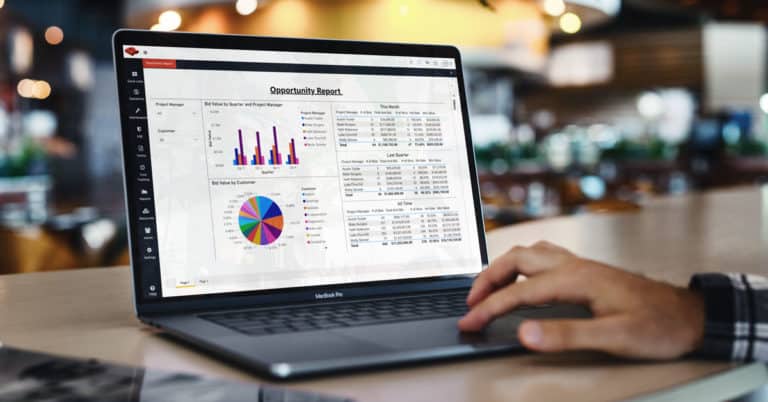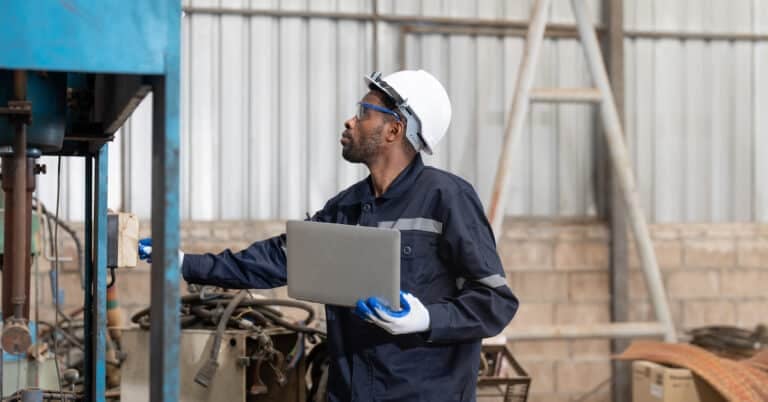The success of an organization’s asset management and maintenance depends on its workforce. A maintenance team is at the heart of the system, which is critical for smooth and safe operations, long-term machinery life, and business profitability. Thus, maintenance teams must have a workforce that is skilled, engaged, and resilient to achieve these goals. Building this workforce starts with effective training and onboarding.
The world of maintenance today is a high-stakes one; it’s no longer just about filling up positions or checking the boxes of job requirements. Maintenance teams must consist of members who understand the nuances of equipment, feel confident navigating unexpected issues, and are ready to jump in with full knowledge of safety protocols and performance standards.
In this post, we discuss the essential training and onboarding strategies to achieve this competence level for your maintenance team members. Use this as a guide for creating programs that not only prepare employees for day-to-day responsibilities but also build a foundation for continuous growth and improvement.
Benefits of Training and Onboarding Maintenance Teams
To understand the strategies discussed below, you must first learn why maintenance training and onboarding steps are important. Investing in the effective training and onboarding of maintenance teams is essential for the following benefits:
High Productivity and Low Downtime
Proper training and onboarding result in team members who have a close understanding of maintenance best practices and the intricacies of your machinery and equipment. Thus, they are well-prepared to diagnose issues quickly, make repairs efficiently, and even prevent problems before they occur. All these capabilities ultimately lead to productive members, smooth operations, and low downtime.
Safety and Compliance
Because maintenance work involves hazardous equipment and environments, training your team members in safety protocols and compliance with industry standards is crucial. Safety training and onboarding programs ensure that team members are prepared to work safely, aware of potential sources of accidents, and responsible for contributing to a safe working environment for everyone.
High Morale and Low Turnover
Through effective training and onboarding, team members are given clear guidance, hands-on learning opportunities, and a roadmap for growth. With these, your maintenance team members are more likely to feel engaged and motivated, preventing burnout and building a sense of belonging within the team. Ultimately, this leads to higher job satisfaction and retention, saving the company time and resources due to the constant recruitment and training of replacements.
Adaptability
Effective training and onboarding programs promote continuous improvement and innovation within the maintenance team. These programs allow team members to continuously develop their skills and stay updated on best practices and new technologies. Thus, you build a team capable of adapting to new challenges and meeting the standards of an ever-changing industrial landscape.
Accountability and Autonomy
Thorough training and onboarding also result in maintenance team members who are more capable of working independently and making decisions confidently. This autonomy allows them to handle tasks without constant oversight, freeing up managers to focus on strategic initiatives. Additionally, well-trained employees are also more accountable for their work, as they understand the expectations and standards required.
Core Strategies for Effective Training and Onboarding
To build a robust training and onboarding program and enjoy these benefits, you must implement the essential strategies discussed below.
Clarity
Every effective training and onboarding program starts with clarity. Maintenance team members, whether newly hired or long-time employees, must understand their roles, responsibilities, and how they fit into the bigger picture. Only then can they be truly motivated and completely engaged.
Set clear goals and expectations from the outset to remove any ambiguity. Thus, members can focus on their core tasks and be more productive during and after the training process. Furthermore, it also helps if you share real-life scenarios a team member might encounter, showing them the ways to handle these scenarios and the potential impact on the organization. This way, you provide more clarity and make the roles more tangible, aligning each individual with team and company goals.
Structure
The structure provides a strong foundation and backbone to any training and onboarding program. To successfully integrate a new team member into the maintenance team, you need an organized step-by-step training and onboarding plan. You can consider breaking the plan into different stages, which can include the following:
- The basic stage can include a company overview, team introductions, and a breakdown of key systems.
- The hands-on stage involves guided walkthroughs of daily tasks and safety procedures.
- Increasing autonomy stage where new hires perform tasks independently with gradually decreasing supervision.
Following this approach, new team members can learn to perform their tasks while building their confidence in their capabilities. It also creates an environment where team members can comfortably ask questions and provide feedback, resolving and clarifying issues before they take on their full responsibilities.
Mentorship
Maintenance tasks require both theory and practice. You can have these together through mentorship. New hires may have up-to-date technical knowledge, but they still need experience and long-term practical skills to be effective. Pairing new hires with experienced mentors in your team creates an environment where they can freely ask questions and seek advice.
Mentors promote the integration of new hires by sharing insights into workplace culture, company values, and day-to-day responsibilities. They can also share their personal experiences and lessons learned from past challenges. This kind of real-world wisdom is often the most impactful for newcomers and builds stronger team bonds.
Digitization
You can leverage digital tools to track and streamline the training and onboarding process. Maintenance management software like Redlist can help you manage training modules, track progress, and provide instant feedback. These tools can help automate parts of the training process, ensuring that new hires complete essential modules and enabling managers to monitor their progress.
Furthermore, the digitization of the training and onboarding process can help you collect data that can be analyzed to gather insights into improvement areas or where new hires may be struggling. This data-driven approach would be impossible with manual paper-based training and onboarding processes.
Safety
A culture of safety is another critical component of an effective maintenance training and onboarding program. Reinforce the importance of safety protocols from day one and make sure new hires understand that safety always comes first. Encourage them to speak up about potential hazards and be proactive about suggestions for improvement. A workforce that feels responsible for safety is more likely to follow protocols and look out for each other.
Growth
As businesses evolve, maintenance needs and best practices change. Your training and onboarding program must be continuously improved upon and updated to help your organization stay at the forefront of industry standards and adapt to new equipment or procedures seamlessly.
Your program must foster a mindset of continuous improvement, where team members are encouraged to reflect on their processes and suggest ways to do things better. This mentality helps the team stay resilient, adaptable, and ready to tackle any challenges that come their way.
Maintenance Team Training Success with Redlist
The training and onboarding of maintenance team members prepares and empowers them to perform their jobs with skill and confidence, ultimately driving operational success and ensuring your maintenance operations are both efficient and sustainable. To do this challenging task, you need digital support from powerful software like Redlist.
In a Redlist case study, a gold mining company saw remarkable improvements in both employee advancement and retention. This is by using Redlist to create a structured, engaging approach to employee training, skill development, and career advancement, all while fostering a stronger culture of retention.
From digital training modules to task management and safety documentation, Redlist equips your team with the resources and support they need to thrive. Embrace a data-driven, mobile-friendly approach to training, and set your workforce up for sustainable success with Redlist.



